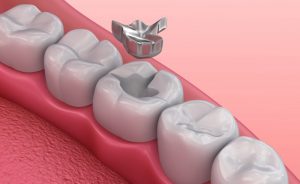How Your Dentist Uses Dental Fillings to Stop Tooth Decay
December 16, 2017
 When your dentist says you have a cavity, you may be disappointed to hear you need fillings to stay protected. This isn’t meant to punish you or make you feel guilty for having a cavity. In fact, your dentist sees it as necessary treatment to stop future tooth decay from spreading deeper.
When your dentist says you have a cavity, you may be disappointed to hear you need fillings to stay protected. This isn’t meant to punish you or make you feel guilty for having a cavity. In fact, your dentist sees it as necessary treatment to stop future tooth decay from spreading deeper.
Your dentist also wants to inform you of the signs and symptoms so you can help him catch cavities early. After all, the earlier the detection the better the prevention will be.
A Brief Overview of Fillings’ Functions and Treatment
Fillings are designed to restore teeth that have been damaged by decay. This treatment also prevents future decay and stops bacteria from furthering deteriorating your tooth.
Prior to treatment, your dentist will have to determine which material is best suited for the filling. This can depend on how much repair is needed, where in your mouth the filling is placed, and how much it will cost to do so. The materials could be silver or other metals (amalgam filling) or they could use a composite resin that is more tooth-colored, but not quite as durable. Regardless, it may be the only option if the decay has worn enough enamel.
How Tooth Decay Forms and Why Dental Fillings Are the Answer
Tooth decay starts when sticky bacterial plaque forms on your teeth. This plaque uses sugars in the food you eat to create acids, which then wears down your enamel. Furthermore, you won’t feel any pain or sensitivity until this acid reaches the dentin, which consists of tiny nerve endings. You’ll notice tooth sensitivity after eating hot, cold, sweet, sticky, or sour foods.
Fillings play a huge role in preventing much more serious conditions in your mouth from occurring. For example, Since tooth decay spreads much faster through dentin than it does enamel, catching it before it reaches the pulp of your teeth is essential to stopping infection. By the time tooth decay reaches the dentin however, it’s too late to use preventive care and your cavity will need a filling. Fortunately, there are ways to stop tooth decay from ever making it that far in the first place.
The Key to Stopping Tooth Decay is Preventive Care
The worst part about tooth decay is how insidious it can be. By the time you feel pain from tooth decay, it’s already to late to practice prevention. If your dentist detects a small area of erosion before it reaches the dentin, he might recommend a mouth rinse, toothpaste, or filling material that contains fluoride to repair the spot.
The best way to avoid tooth decay is through at-home care. This means brushing twice a day with fluoridated toothpaste, flossing once a day, and checking in with your dentist to make sure your regimen is effectively removing plaque. You may also want to use a mouth wash that is proven to strengthen your tooth’s enamel.
Dental fillings exist to stop much worse damage from happening. Don’t let a tooth abscess ruin your day; practicing preventive care every day!
About the Author
Dr. William W. Way earned his undergraduate degree from the Virginia Military Institute and his doctoral degree from the Medical College of Virginia. He is a member of the American Dental Association, the Commonwealth Study Club, and the Richmond Dental Society. To learn more about his practice and his contributions to the community, contact him at (804) 288-0948 or visit his website.
No Comments
No comments yet.
RSS feed for comments on this post.
Sorry, the comment form is closed at this time.
